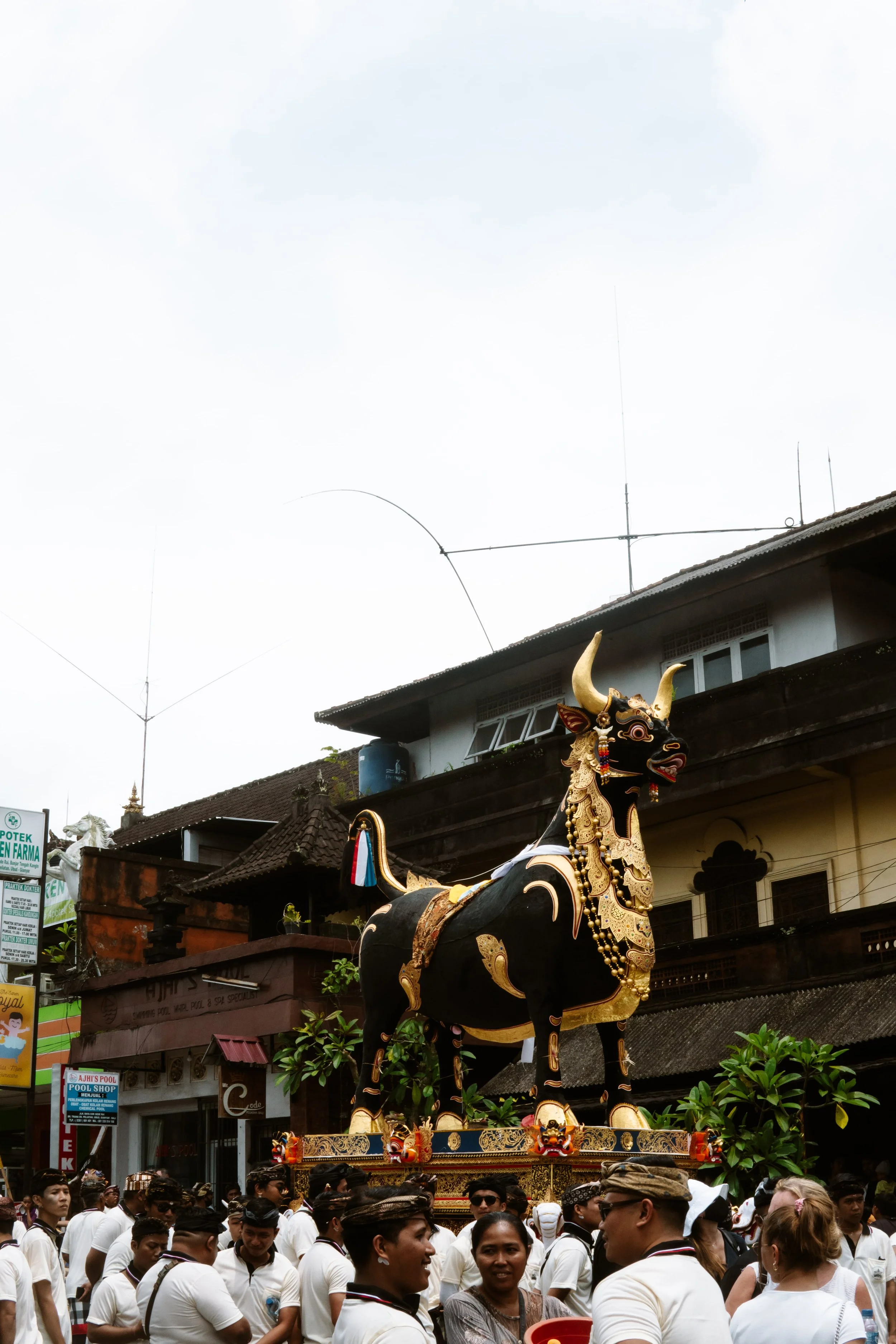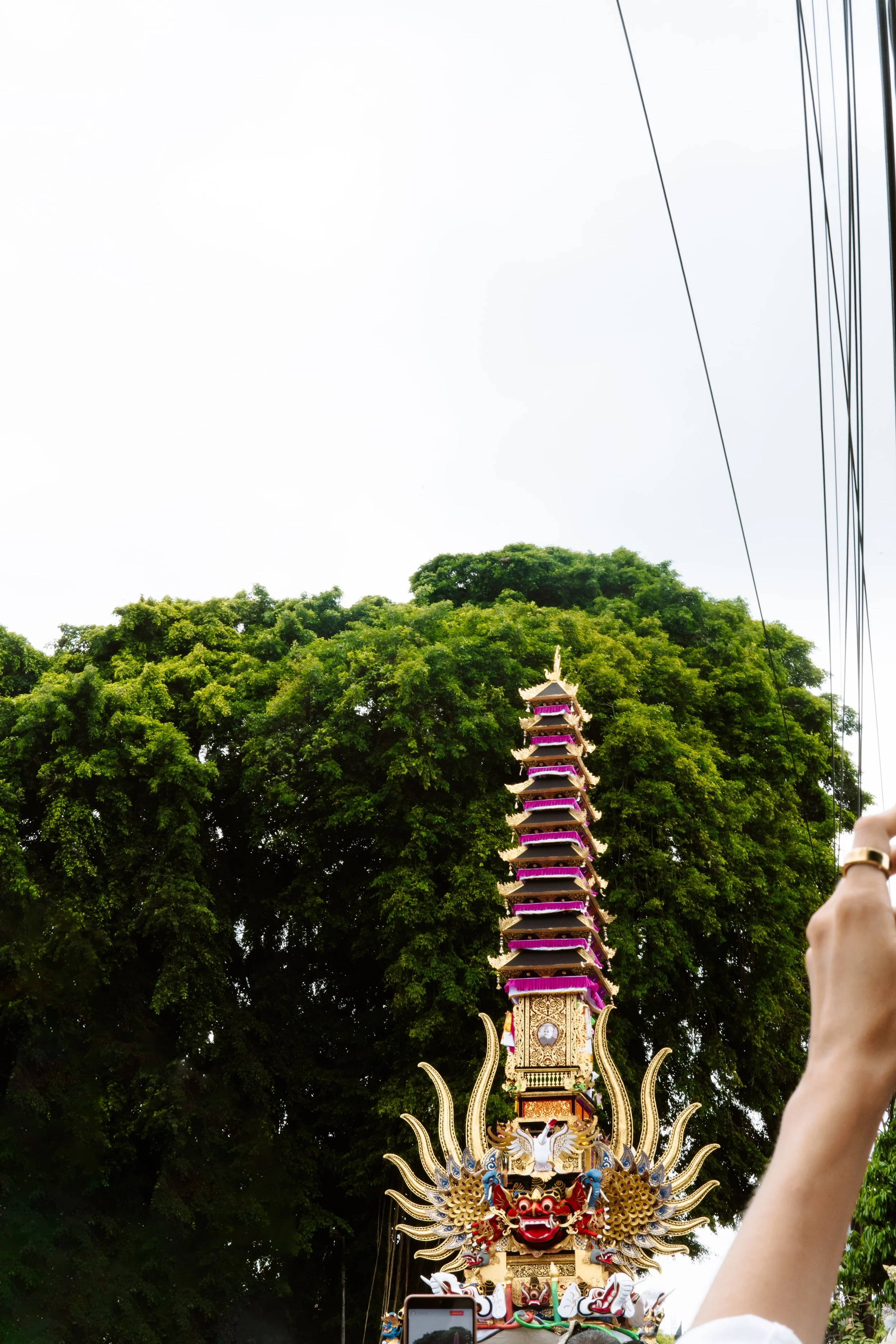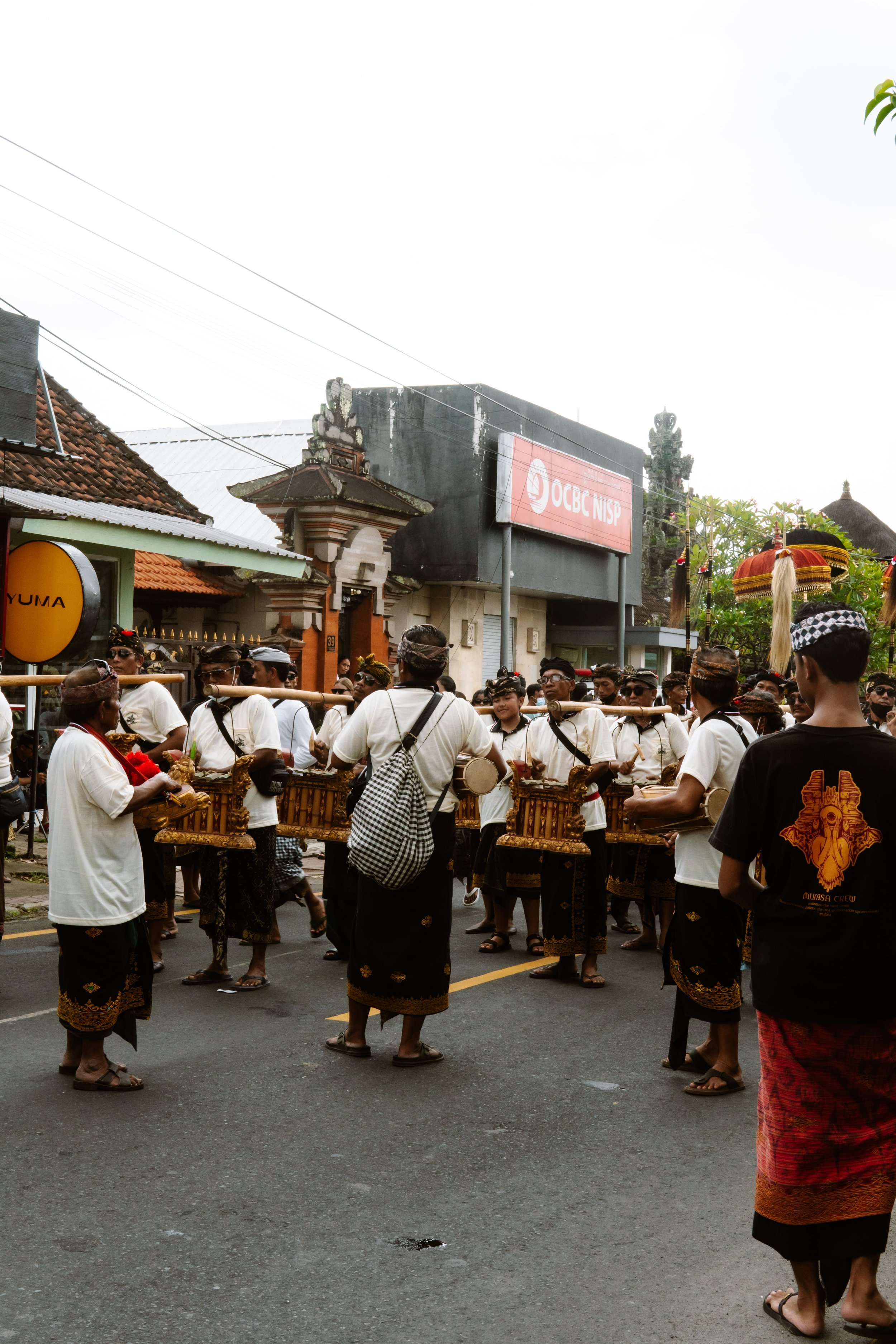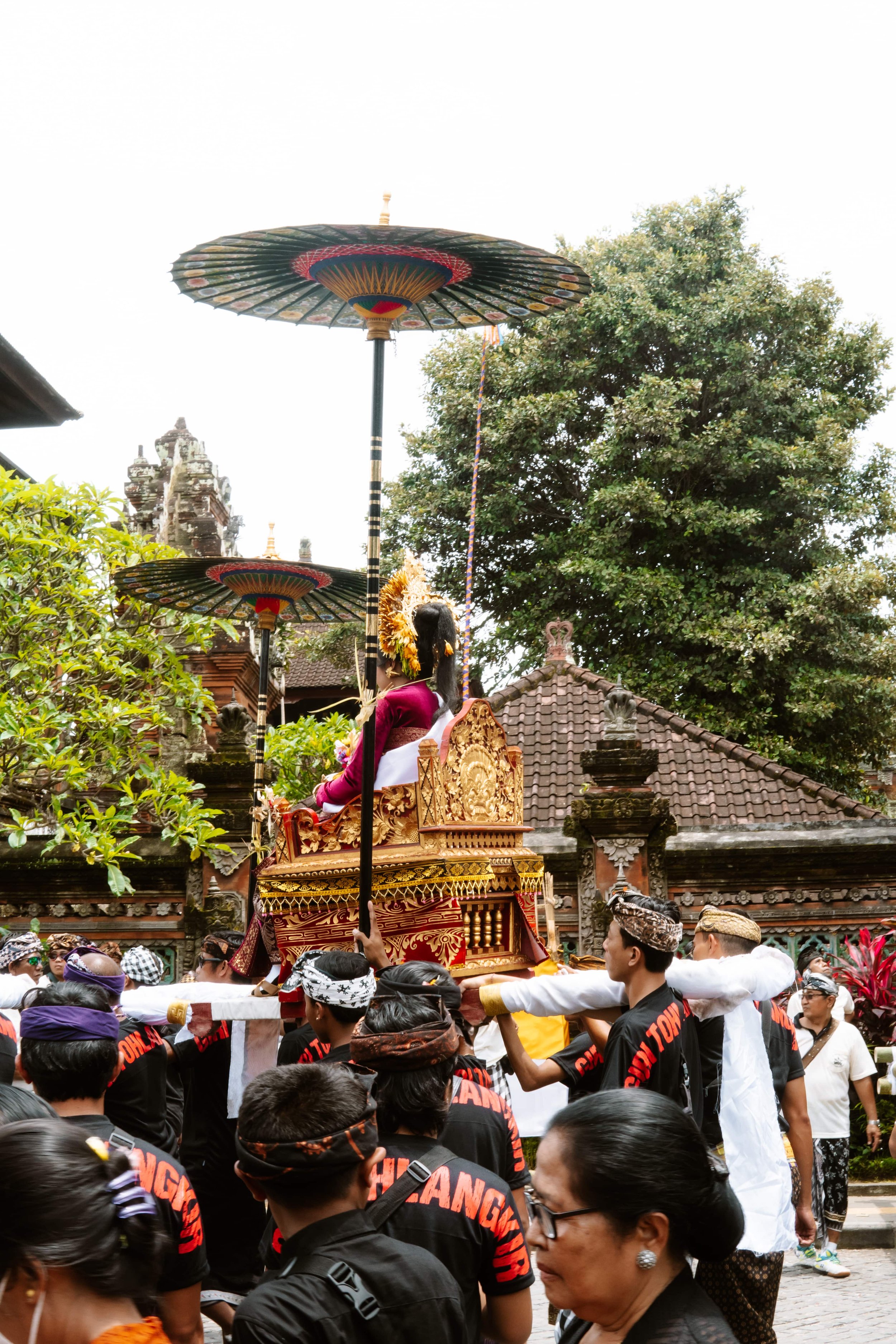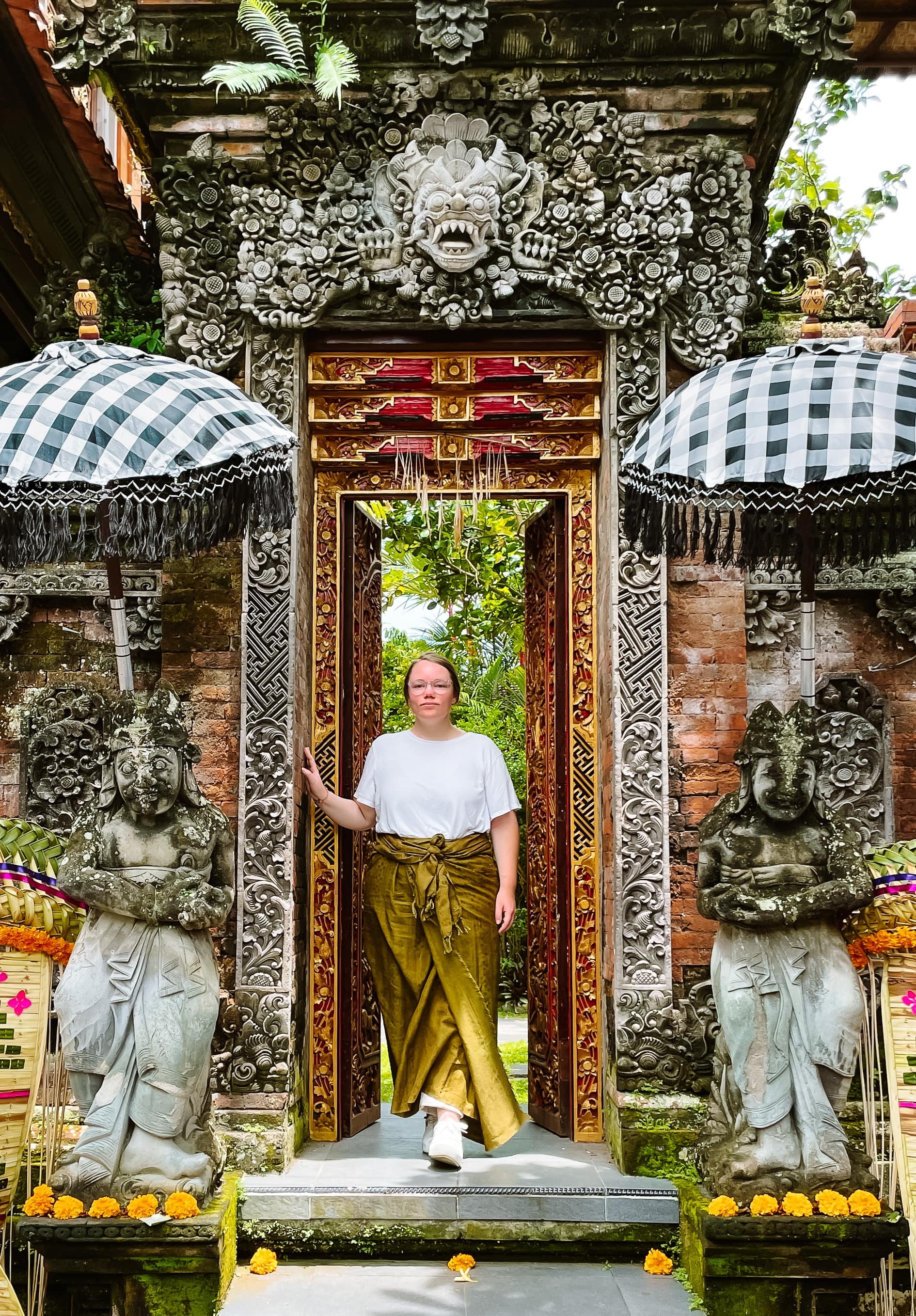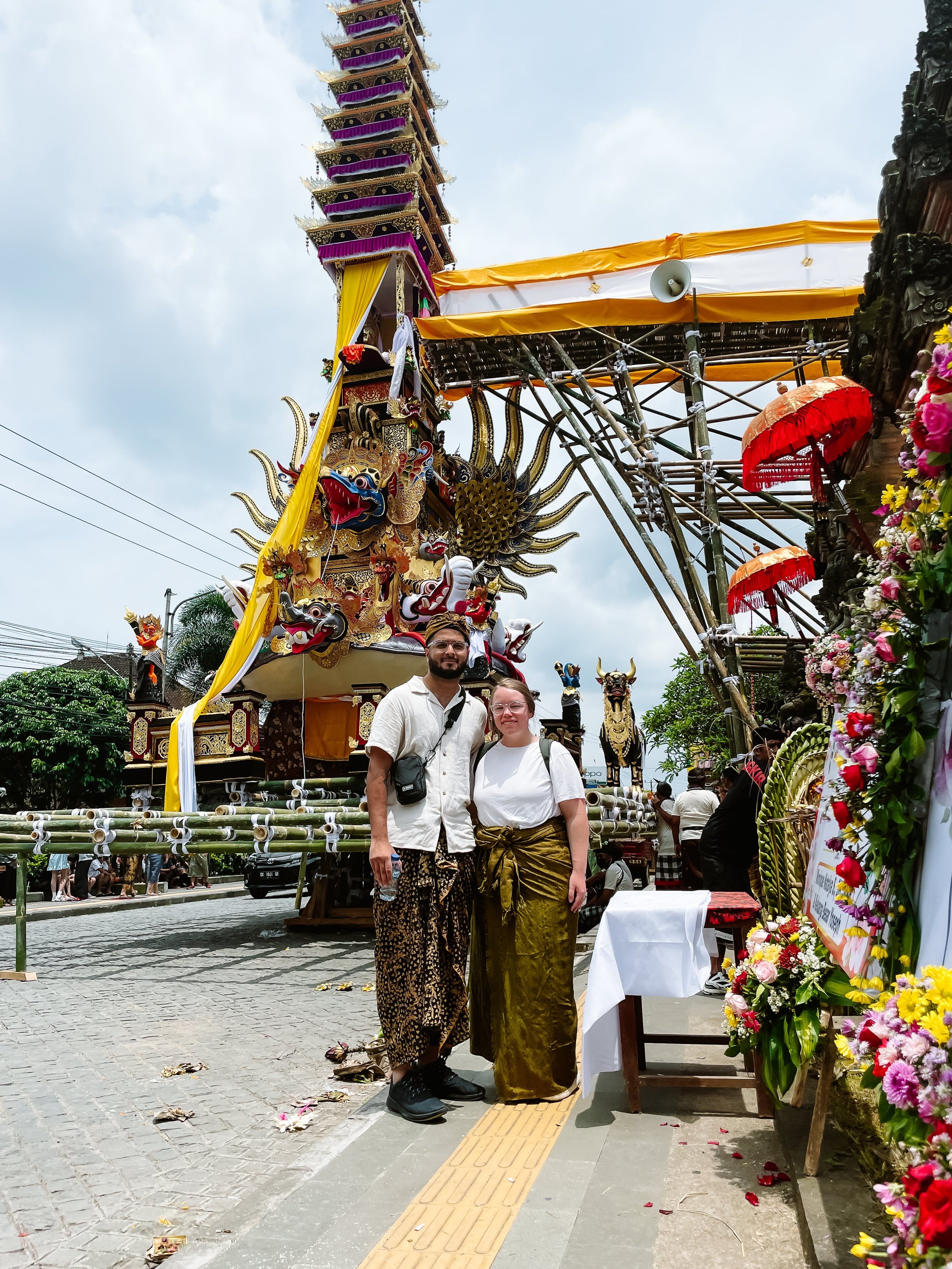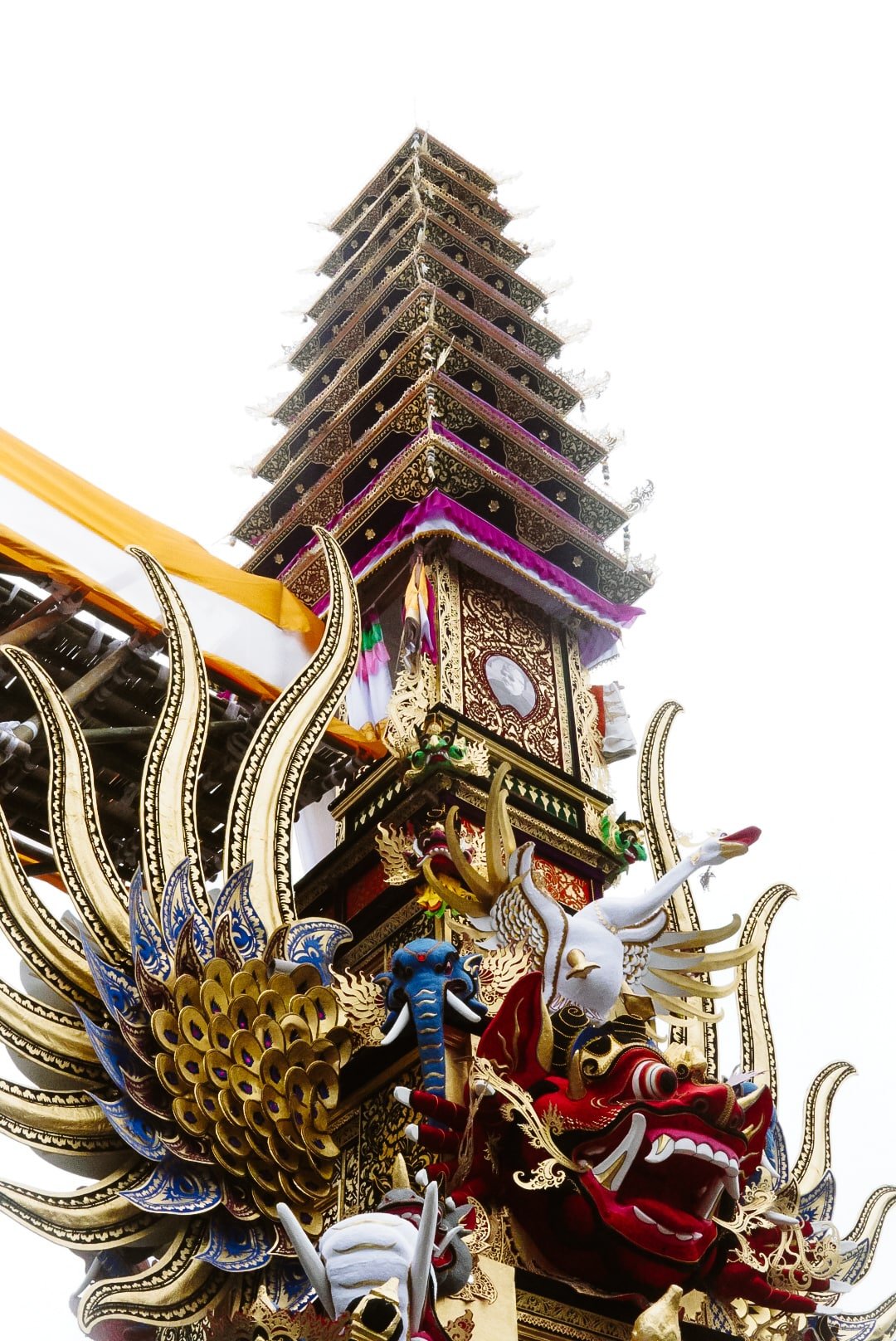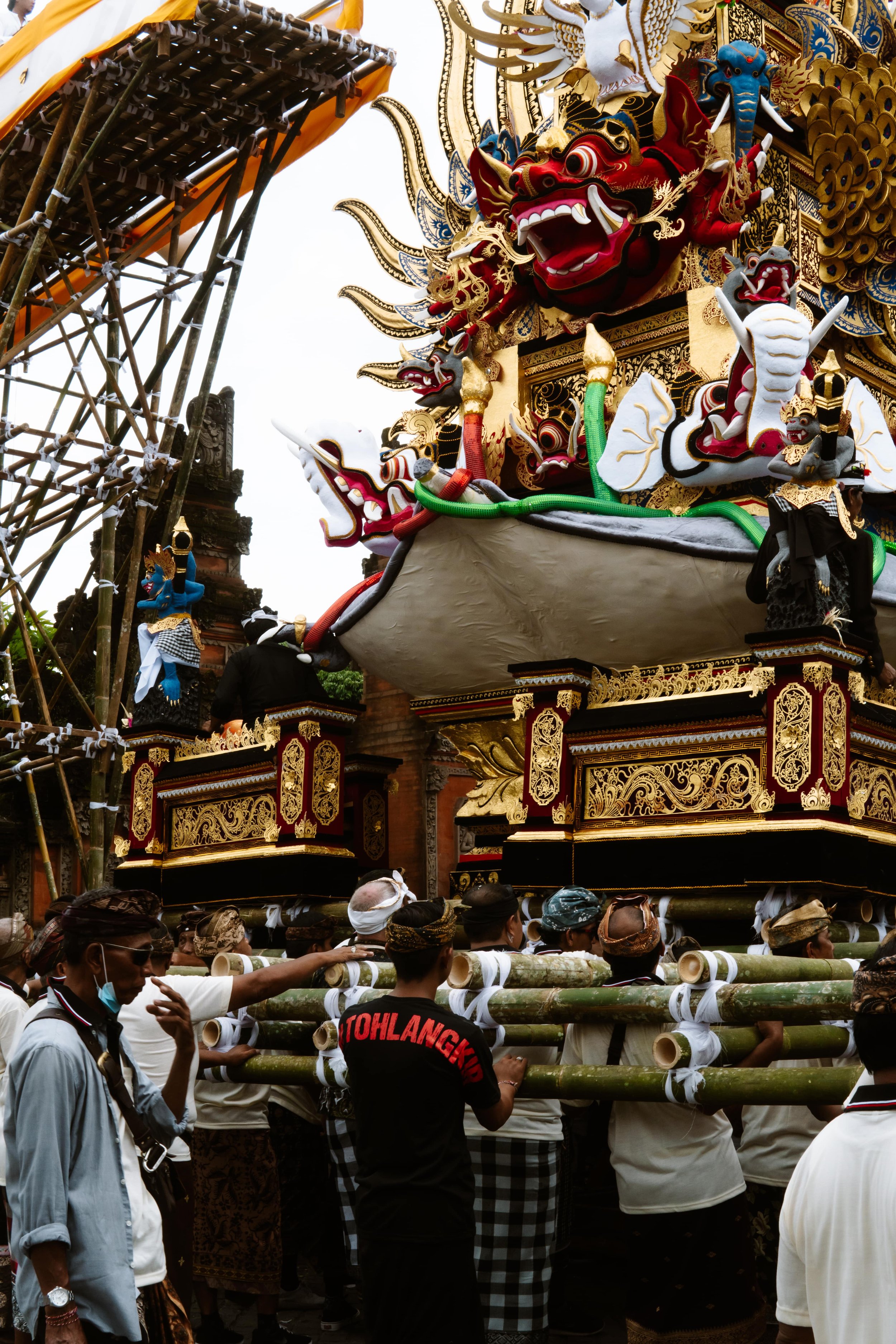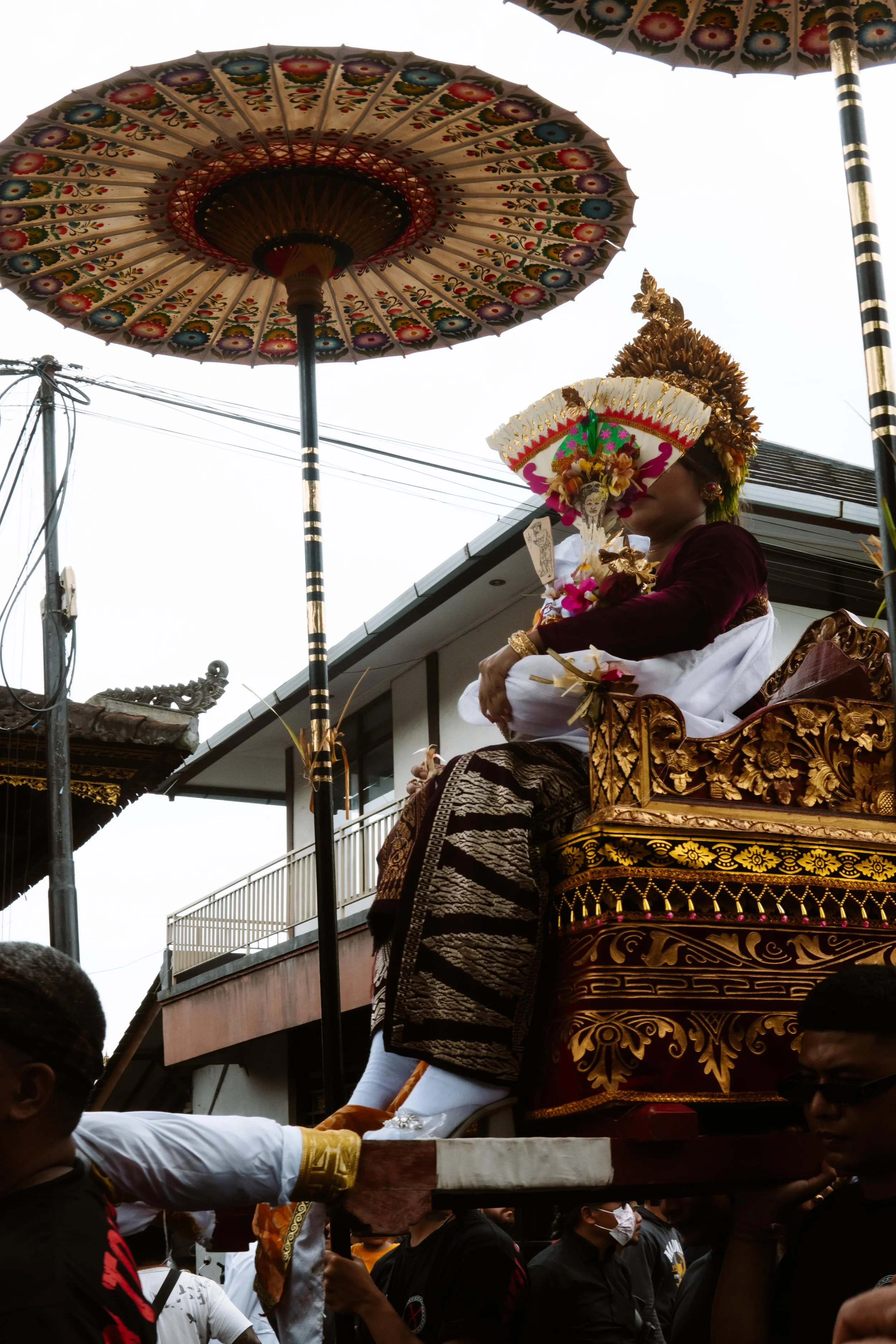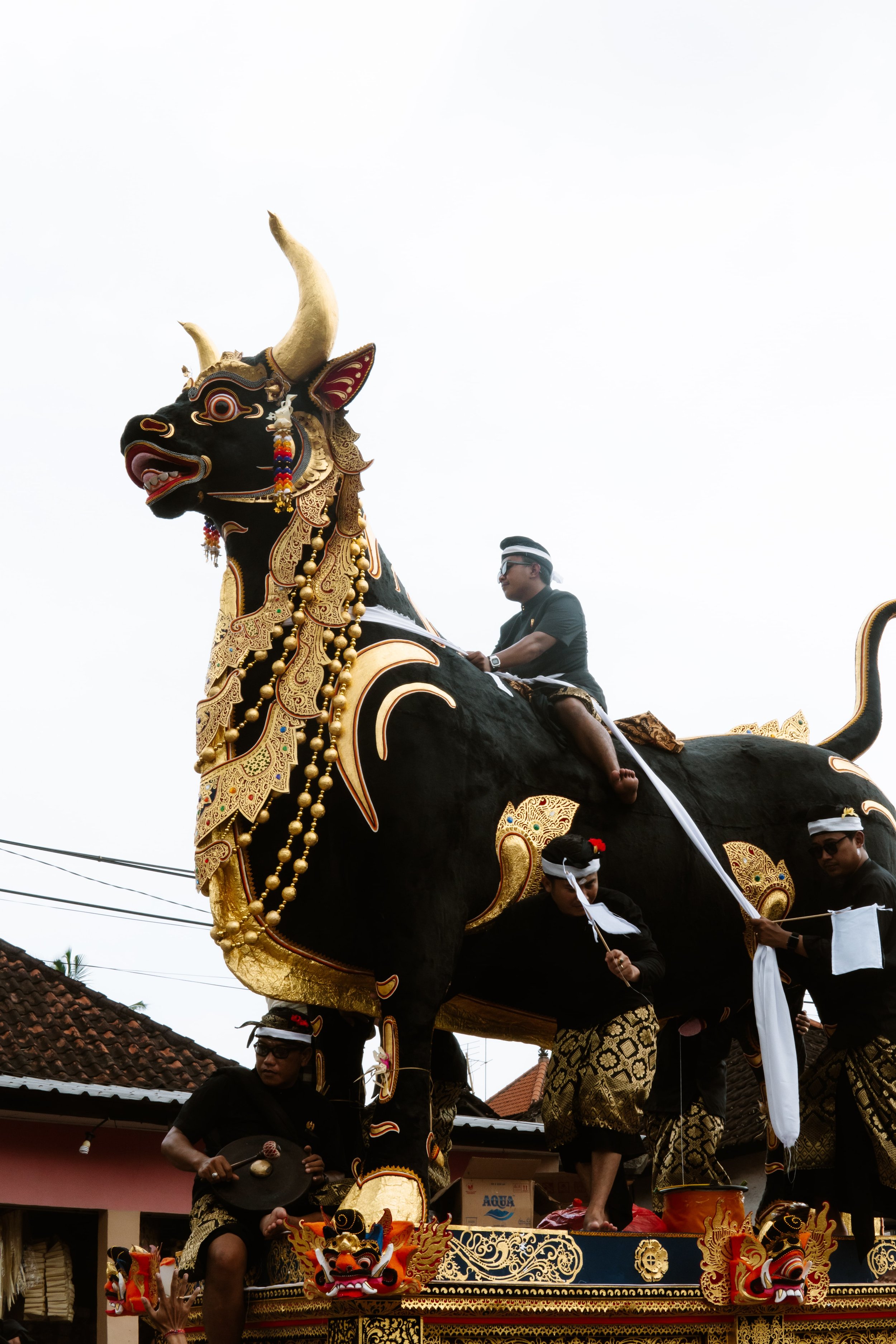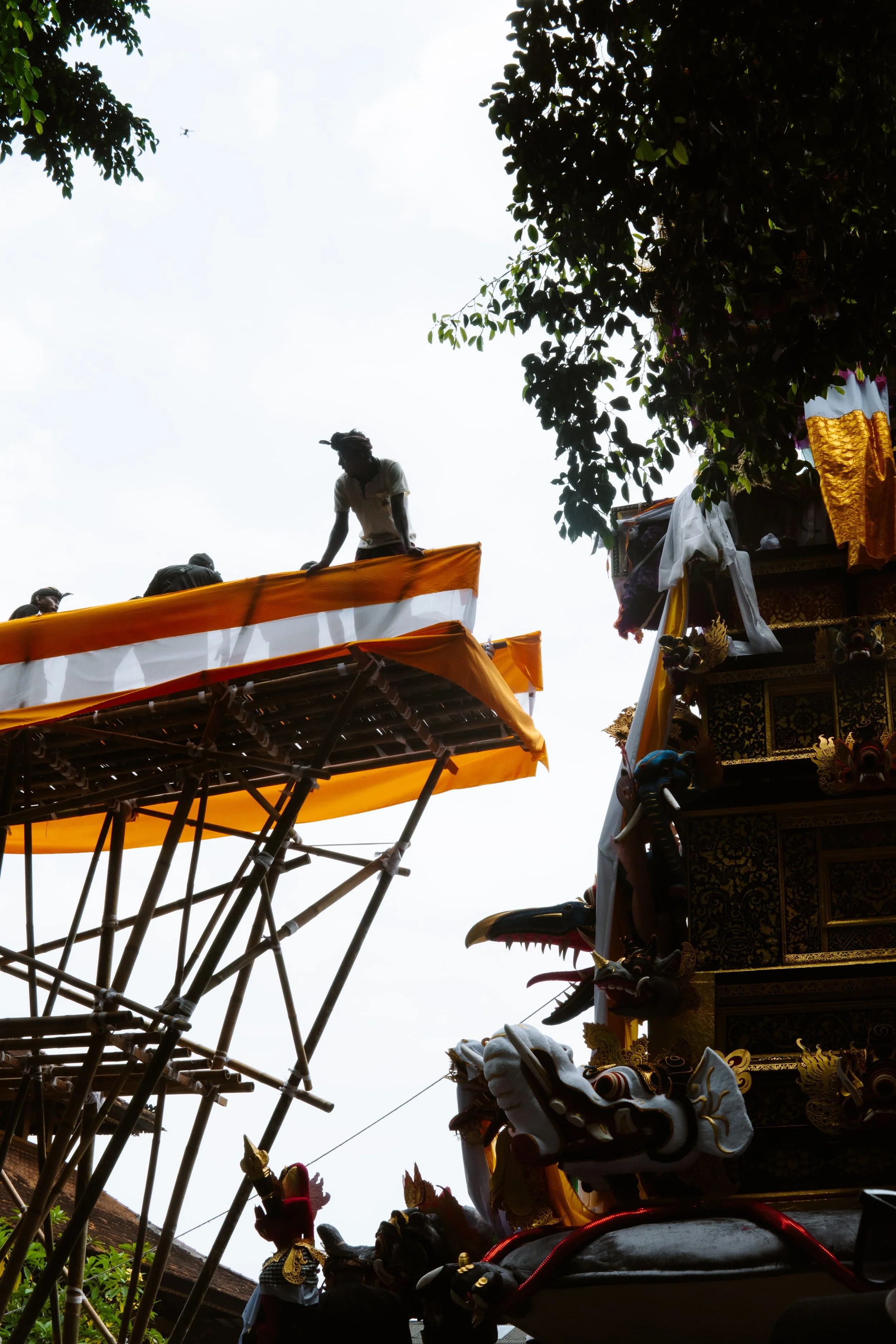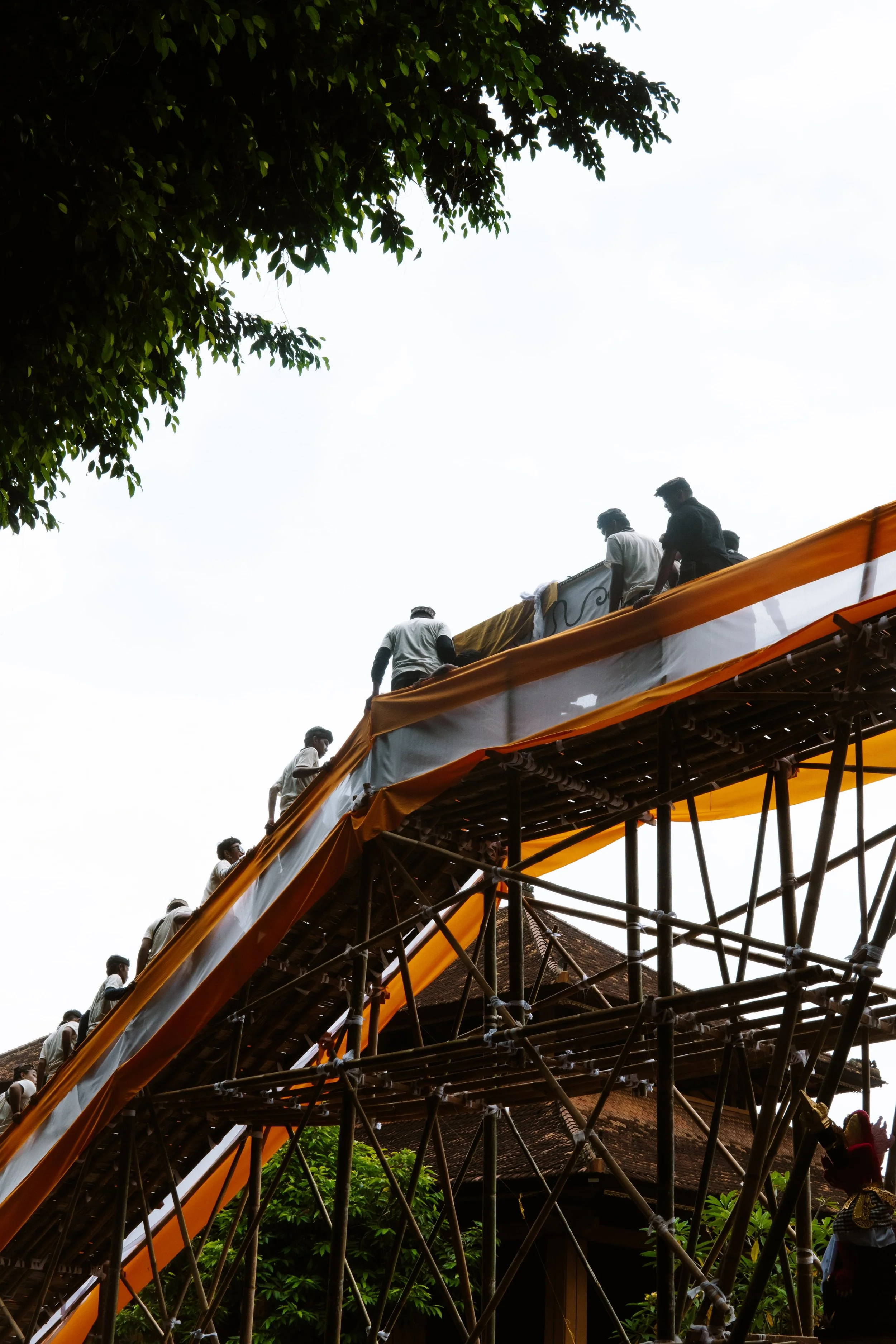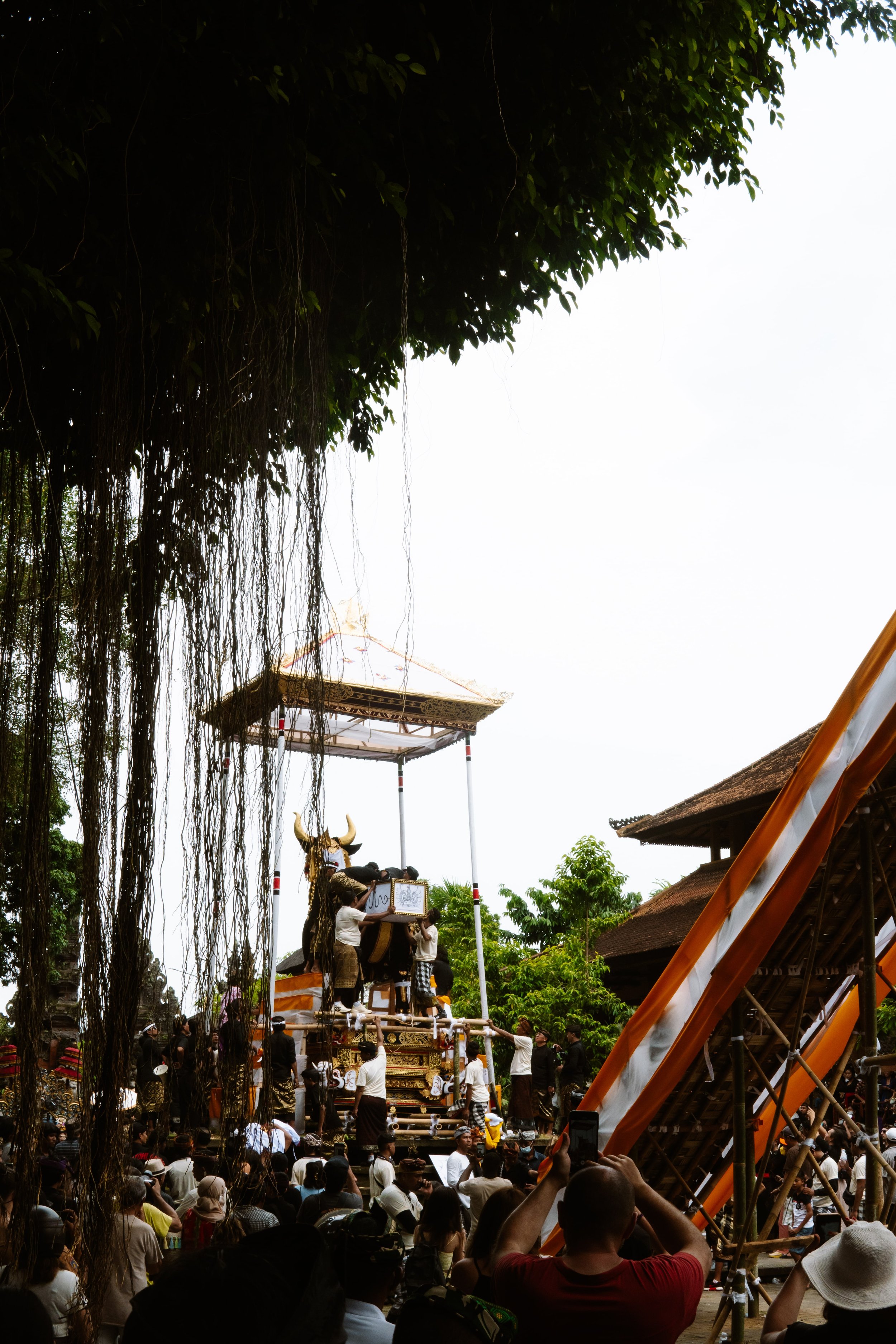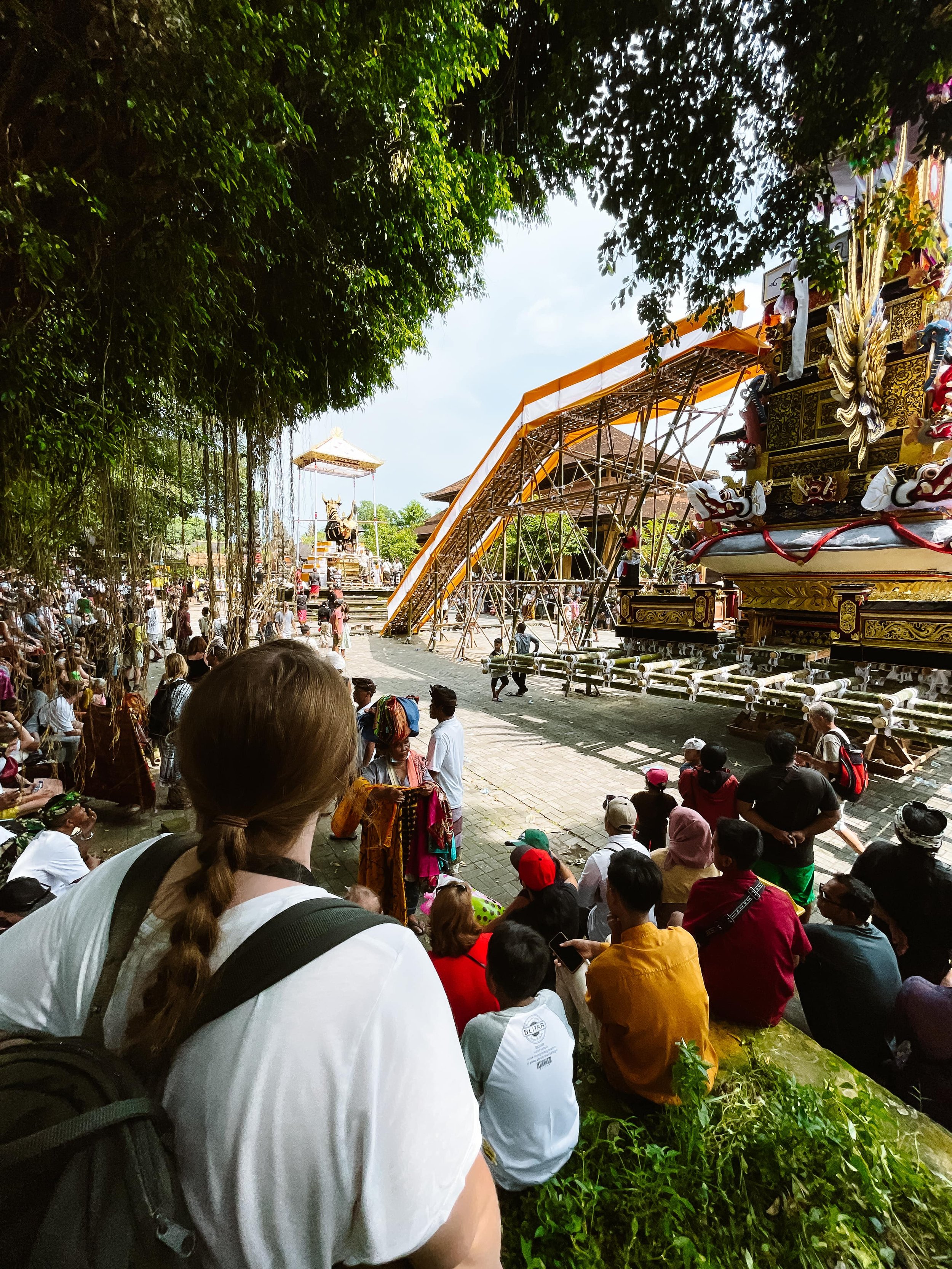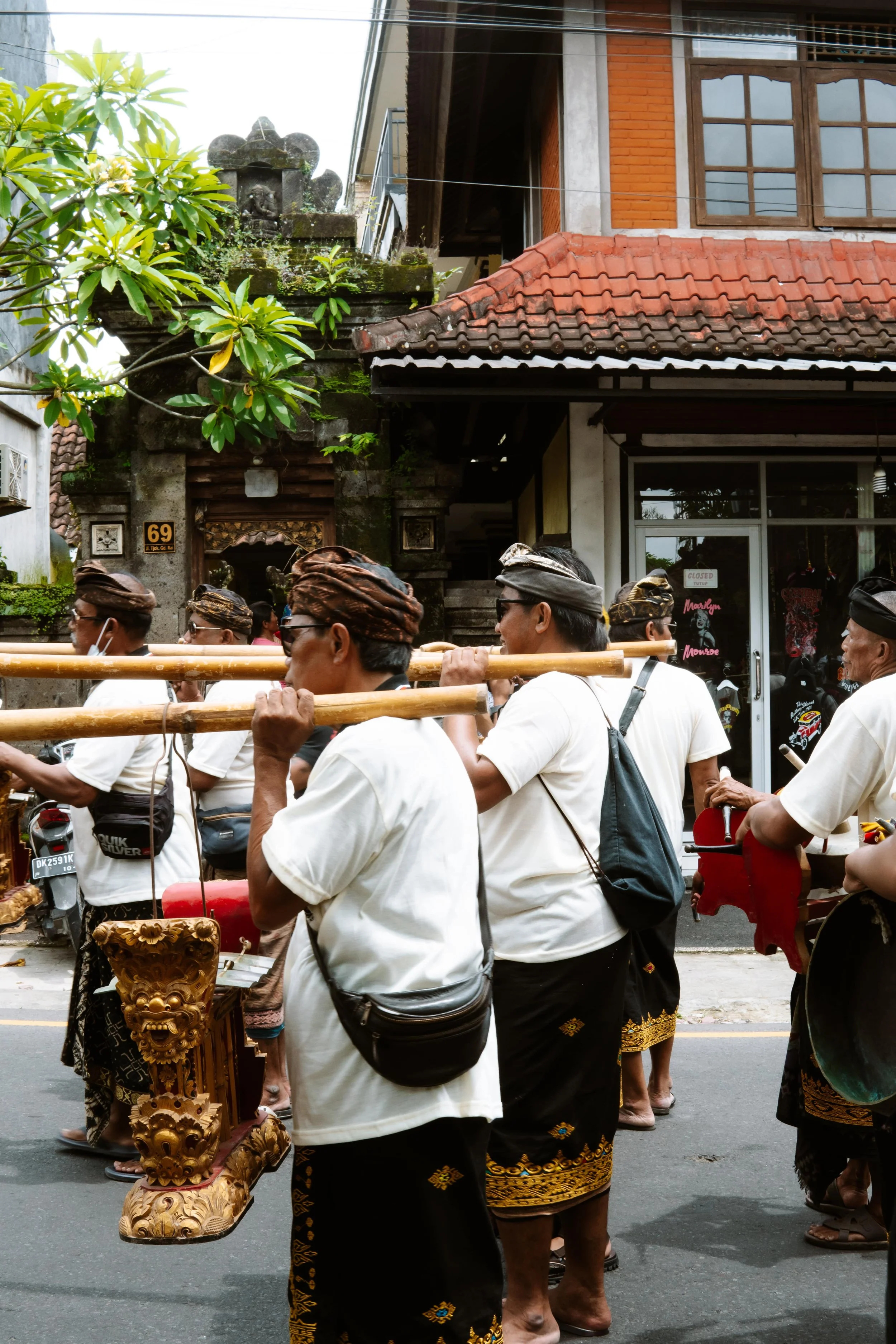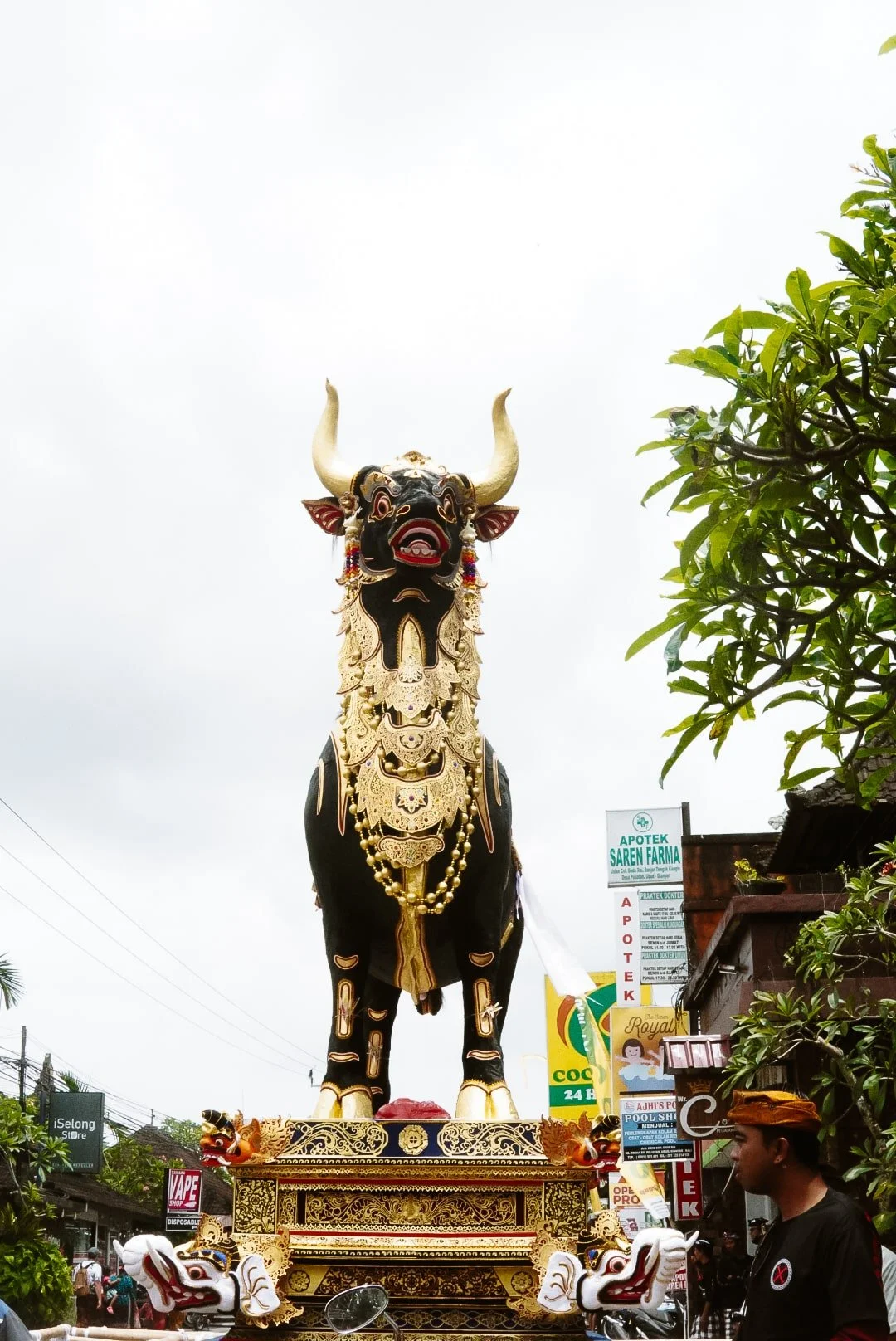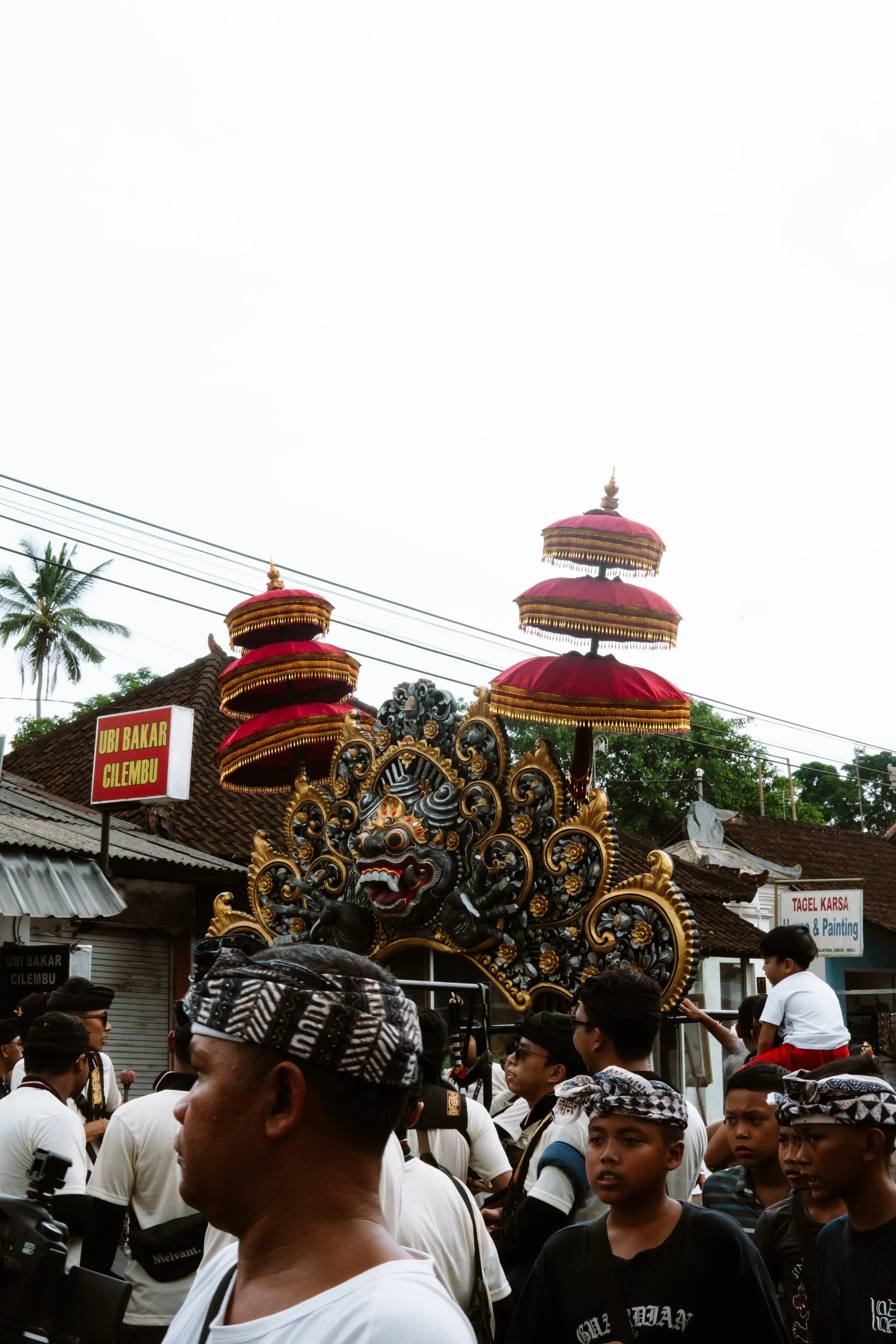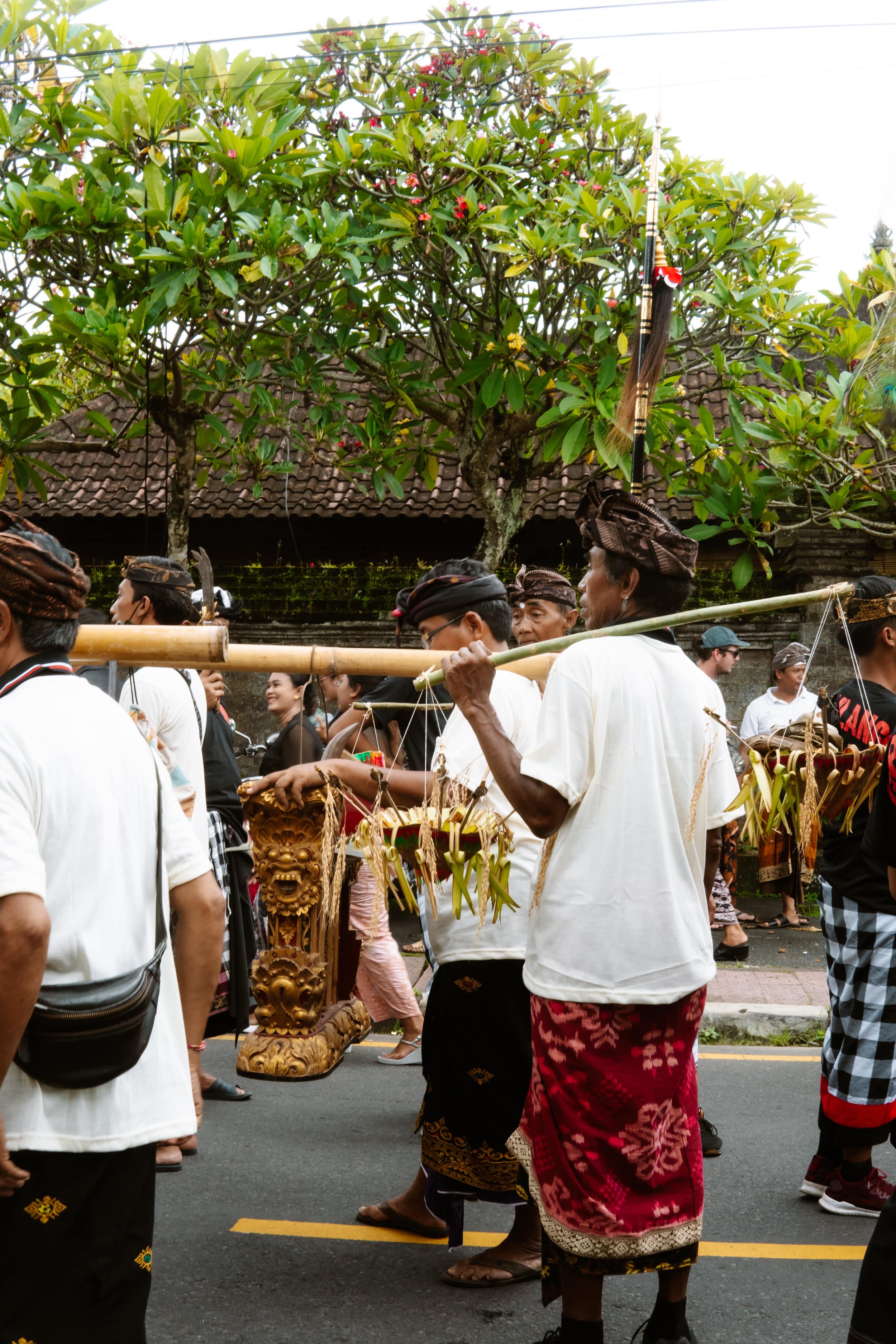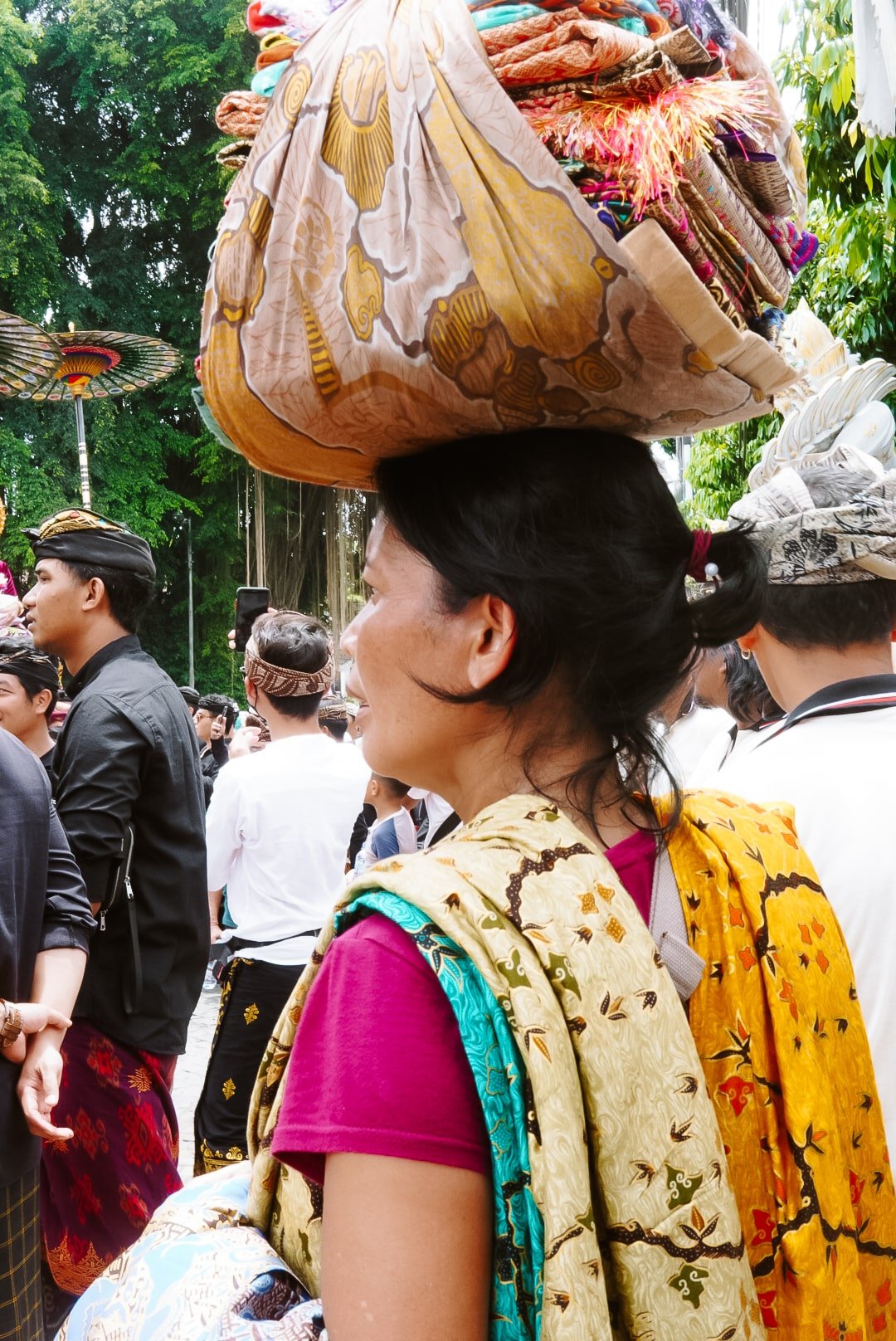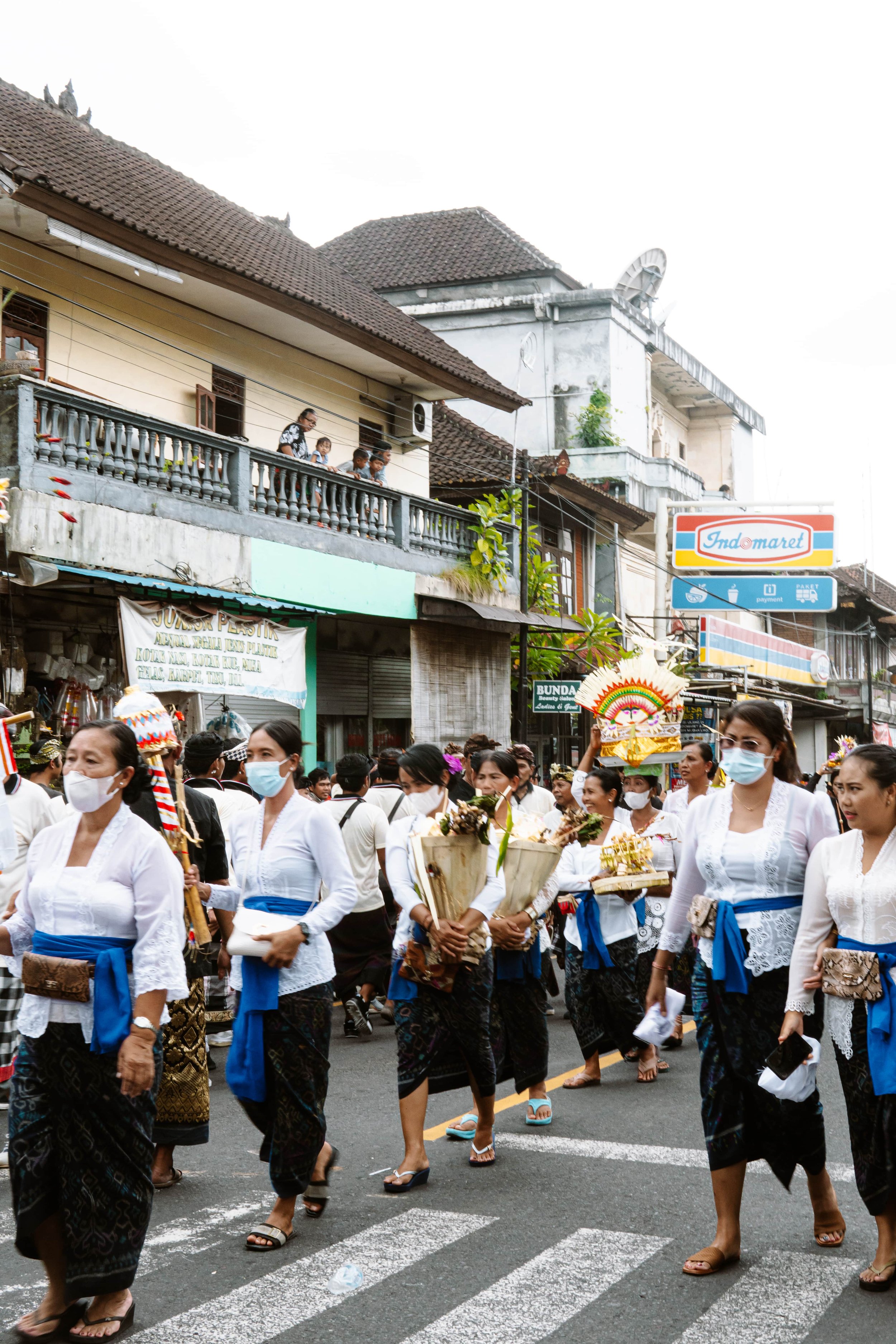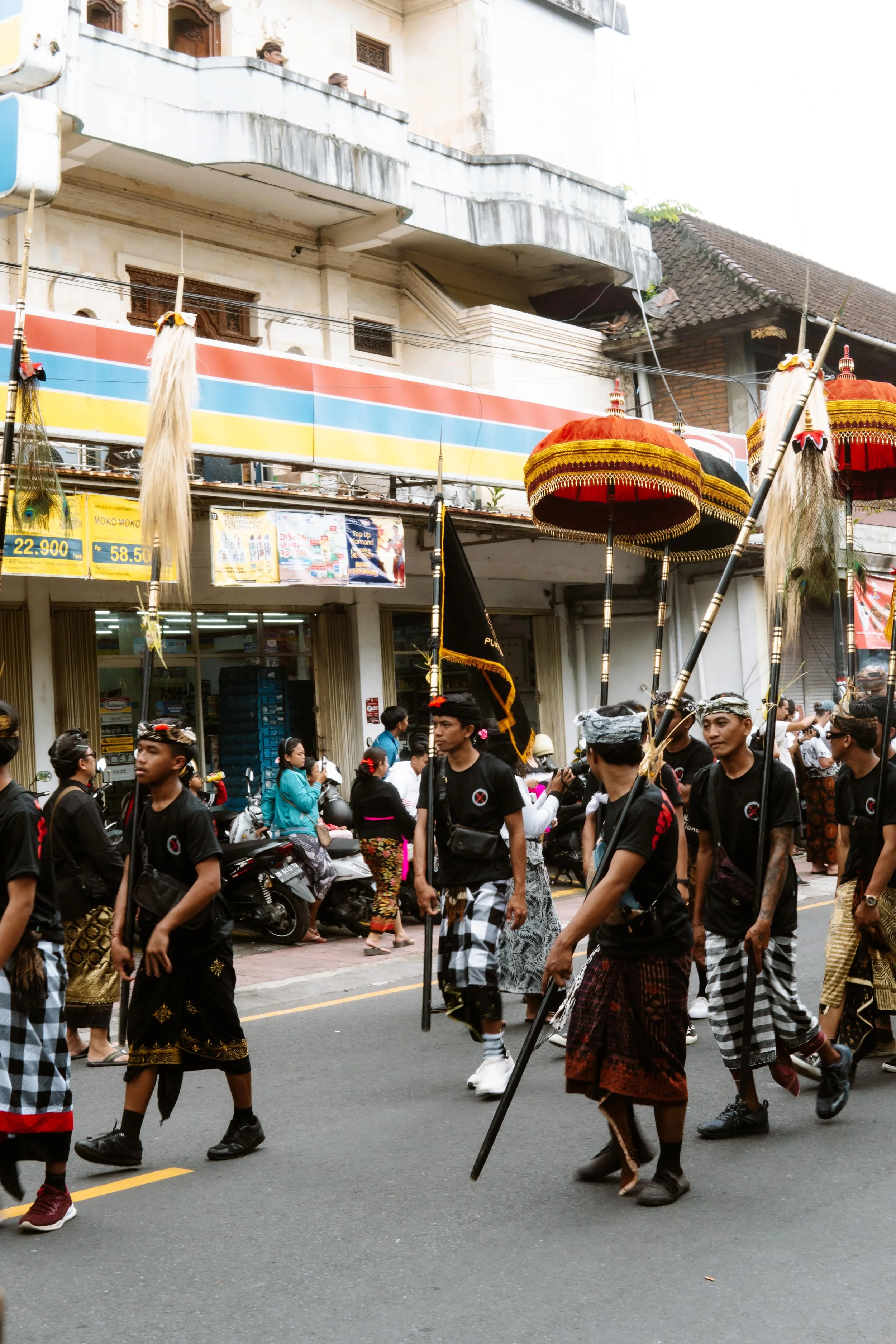Attending a Ngaben Balinese Hindu Cremation Ceremony as a Tourist
While in Ubud, Bali, Indonesia I had the opportunity to attend a Balinese cremation ceremony called Ngaben as a tourist. This experience was unlike anything I have ever been a part of before so I want to share this cultural experience and tips so others can see firsthand a Balinese religious ritual that is so deeply important and special to the Balinese Hindu community too.
Affiliate Disclaimer
Please note that some of the links on this website are affiliate links. This means that I may earn a commission if you click on the link and make a purchase at no additional cost to you. I only recommend products and services that I have personally used or thoroughly researched. Thank you for your support!
What is a Ngaben Cremation Ceremony?
There are many resources out there that more eloquently and fully describe this beautiful ritual of life, but let me try my best here to explain.
A Ngaben (which translates to “turning into ash”), is a ritual performed in the Balinese Hindu religion as a way to release a loved ones spirit from the mortal body to the afterlife for reincarnation in the future after they have passed away. It is a funeral but not one of tears or sadness; instead, it is of celebration and joy because they know their loved one will return to a better life or be granted the ultimate stay in heaven. While their souls are released to the afterlife, their bodies are burned and returned to the Earth.
The ceremony includes a number of traditions done both privately by the family of the deceased and publicly - all steps being critical to the success of their reincarnation and among one of the most important Balinese religious celebrations on the island.
What is the Process for a Balinese Cremation?
The timeline for the cremation is determined by the Balinese calendar system, elders, and the situation/preference of the family involved. There is no schedule for Ngaben’s. The preparation for them can take weeks to years to happen after the death depending on the above details. So if you are in Bali and hear from locals there is a Ngaben happening during your stay, that will likely be your only chance to witness this special Balinese ceremony!
A general timeline of events includes:
The death of a loved one. The body is either buried or stored temporarily until the ceremony occurs.
Calling out for the soul
Cleansing of the body
Priests pray over the soul
Family acceptance of passage
The body is laid in an ox or temple-shaped structure
Balinese parade that begins at the home of the deceased and ends at the nearest temple
Set of prayers
The body is set on fire to be cremated
Ashes are spread by the family in the nearest sea or river
The events seen by the average tourist though attending a Ngaben include only the parade and cremation.
How did I hear about this ceremony?
Upon my arrival in Ubud, Bali, I got to know my villa host, Anom (owner of Prabhu Ubud Villas), pretty well. One day while we were talking about things to do around the island, he brought up a Cremation Ceremony happening in the coming days and encouraged me to attend. Leading up to the event, 3 of my taxi drivers also brought it up to me and asked if I would be attending as well. This ceremony was for a member of a royal family so it would be a big deal to attend.
Needless to say, the community loves for tourists to be involved. In the Western world, we’d cringe at the idea of allowing just anyone to attend a loved one’s funeral. But in Bali, this ritual is for celebration, not sadness and grief so all are welcome.
If you are in Bali and hear from locals that there is one happening during your stay, that is likely your one and only chance to attend!
Sequence of Events
On the day of the ceremony, my driver picked me up from my villa around 11 am for the ceremony to begin at noon. I was provided a sarong to wear for the entire duration of the event (which is required).
The Ngaben I attended was for a royal family member so it was quite the spectacle and crowded. People from all over the area + tourists were there to see it. The parades begin at the home of the deceased and this one ended at a temple about 1.3km down the road. The home was a palace (the Peliatan Palace) and absolutely stunning. I was allowed to walk around Peliatan Palace before the ceremony began.
While waiting around for it to begin, locals and those involved in the parade gather and begin to line the streets in anticipation. You can take some time to take photos with the temple and ox during this time as well.
Right on time at noon, a man began to speak over a megaphone telling the participants to get in their places and prepared for the walk to the temple. The casket was taken up a bamboo ramp to be placed high in the 20 foot temple tower. This temple was massive and incredibly intricate. It is carried the entire way by groups of men that trade places about 4 times along the way due to its weight and distance to be traveled.
Preceding the temple tower is the ox, family members carried in chairs, music, pictures of the deceased, etc. When it was time to get started the group carrying the temple tower would spin the tower and run with it. The purpose for this is to confuse the deceased spirit so it doesn’t stay in the physical realm but instead moves on to the afterlife.
If you are walking along with the parade to the temple (which I recommend you do for the experience), keep out of the way and stay alert because every now and then they will run with the tower and you need to keep their path clear. If you hear screaming this is likely your sign that this is what is happening!
It took about an hour for the entire parade to make it to the end destination, the temple, where the cremation happens. For this ceremony, in particular, the temple we ended at was Pura Dalem Puri Peliatan.
Select participants prep the ox to hold the body for burning. They cut the back of the ox off revealing an open section large enough to fit the body inside. The tower pulled up to another bamboo ramp where the casket was taken down to the ox.
A ritual took place where offerings and the casket circled the ox before the casket is handed to the men standing at the top of the ox. The body is removed from the casket and placed into the ox. The body is wrapped tightly with white fabric so you can’t see the body other than its general silhouette. Once placed inside and all other preparations complete the ox is lit on fire.
Very quickly it is engulfed. Soon after it is lit the ox begins to burn up and the body falls through the belly of the ox where is will turn to ashes. (Warning that this is the time where there is a chance you may see the body as the fabric will have burnt up by this time).
Tips & Things to Know
The entire ceremony was about 2.5-3 hours for what I attended. You can stay longer or arrive earlier if you wish.
Sarongs are required for both men and women. I was able to borrow this from my lovely villa host but there are also ladies selling them at the location of the ceremony if you forget or can’t find one before arriving.
Tourists are welcome and encouraged to attend to experience a culture and religion hands-on that may be very different from your own. What I have realized since traveling is everyone wants to share their country’s beauty with others with open arms.
Pictures and videos are perfectly OK to take. I asked many locals to make sure and they all ensured me I could do so. You will find many people, tourists and locals alike, with their phones and cameras out capturing the spectacle.
Bring lots of water with you to stay hydrated. If you need to buy more while there stop at the local shops along the road, don’t buy from the people walking around and selling to you out of buckets if you want to save a few bucks. The local shops have water for about 5.000IDR while the people selling on the streets are selling for about 15.000IDR.
For the cremation process, the body is placed in the ox and burned. Eventually, the body will fall through the belly of the ox to the ground and there is a chance you may see part of it. If this is sensitive to you, I recommend leaving immediately after the ox is lit on fire, or don’t attend this part of the ceremony at all.
I had the privilege of having a local with me for the entire ceremony, though this is certainly not required for tourists to go! My villa host happened to hook me up with a driver and guide for the day after I inquired about going. I did enjoy having a knowledgable local with me however because I was able to ask questions as the process occurred, so if this is something you can arrange, I recommend doing so.
Final Thoughts
As someone who has always held the fear of death and what comes after in the back of my mind, I would be remiss to not mention my hesitations of attending a ceremony glorifying the one thing I dread and try very hard to avoid thinking about. My final decision to attend though, stemmed deeply from the desire to have an experience well out of my comfort zone and out of respect for a culture I knew little about prior to this day. To be faced with staring at a coffin, knowing there is a burning body right in front of your eyes, was a scene that I kept thinking about for days to come.
But there was also a big lesson learned both about my resilience and also regarding the inevitable - that is that death can be beautiful. It can be celebrated. You can miss a loved one but the life they lived and the comfort of their next one should be honored. No matter what your religious affiliation is, there is beauty that can be found in the thing everyone most questions and often fears.
There is something so special about knowing an entire religion believes from birth that they are destined for something even greater when they pass so that fear does not instill in them and they live each day with purpose, intent, and happiness. While most religions believe in some sort of destined afterlife, Balinese Hinduism just felt different. More positive. More intriguing. More comforting.
If we all sought celebration of life instead of grief, how would we all face the end of our time? Would we be more content in the day-to-day? Happier?
I think so.
More Photos
↓ read more indonesia travel guides ↓
PIN FOR LATER!
